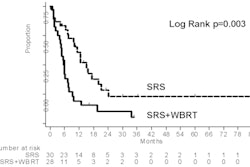A new report published today projects that the number of new cancer cases in the U.S. will grow by 45% over the next 20 years, with a "dramatic spike" predicted among elderly and minority populations.
The number of new cancer cases diagnosed annually in the U.S. will increase from 1.6 million in 2010 to 2.3 million in 2030, according to the study, which was published online April 29 in the Journal of Clinical Oncology. The study is based on work conducted by researchers from the University of Texas M. D. Anderson Cancer Center in Houston.
The U.S. population is expected to grow by 19% (from 305 million to 365 million), while there will be a 67% increase in cancer incidence in older Americans (from 1 million to 1.6 million), compared to an 11% increase in those under the age of 65 (from 630,000 to 670,000).
The report projects a 100% increase in cancer prevalence among minorities (from 330,000 to 660,000), while among white Americans, there will be a 31% increase (from 1.3 million to 1.7 million). The rates of cancer will increase by 64% in blacks, 76% in American Indian-Alaska natives, 101% among those who are multiracial, 132% among Asian-Pacific Islanders, and 142% in Hispanics.
"In 2030, 70% of all cancers will be diagnosed in the elderly and 28% in minorities, and the number of older adults diagnosed with cancer will be the same as the total number of Americans diagnosed with cancer in 2010," said lead author Dr. Ben Smith, an adjunct assistant professor in M. D. Anderson's department of radiation oncology.
Smith and co-researchers developed their numbers by analyzing U.S. Census Bureau statistics, which were updated in 2008 to project population growth through 2050, as well as the National Cancer Institute's Surveillance, Epidemiology and End Results (SEER) registry, which represents 26% of the U.S. population. Cancer incidence rates were calculated by multiplying the age, sex, race, and origin-specific population projections by the age, sex, race, and origin-specific cancer incidence rates.
With respect to disease types, the leading cancer types are expected to remain the same, with breast, prostate, colon, and lung cancers the most prevalent. But the greatest increase in incidence will come from cancers of the stomach at 67%, liver at 59%, myeloma at 57%, pancreas at 55%, and bladder at 54%.
The authors state that the studies results indicate that future clinical studies must include older adults and minorities, who historically have been underrepresented in clinical research, while the likelihood of a looming shortage of healthcare workers must be addressed.
Related Reading
Cancer cure rates on the rise in Europe: study, March 24, 2009
Cancer survivors often forgo needed care due to cost concerns, February 5, 2009
Socioeconomic, racial disparities seen in head and neck cancer prognosis, December 4, 2008
Copyright © 2009 AuntMinnie.com



















